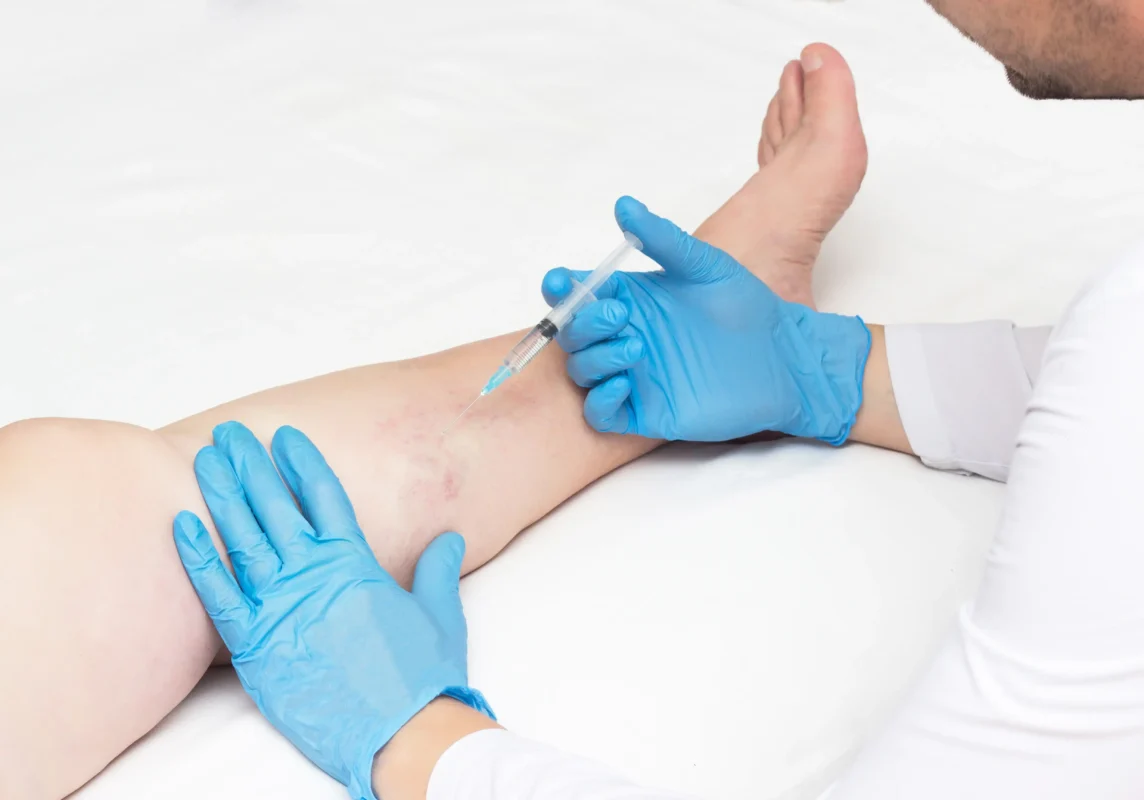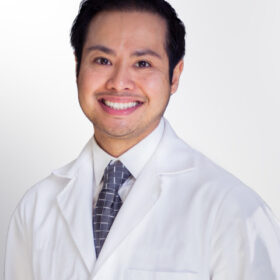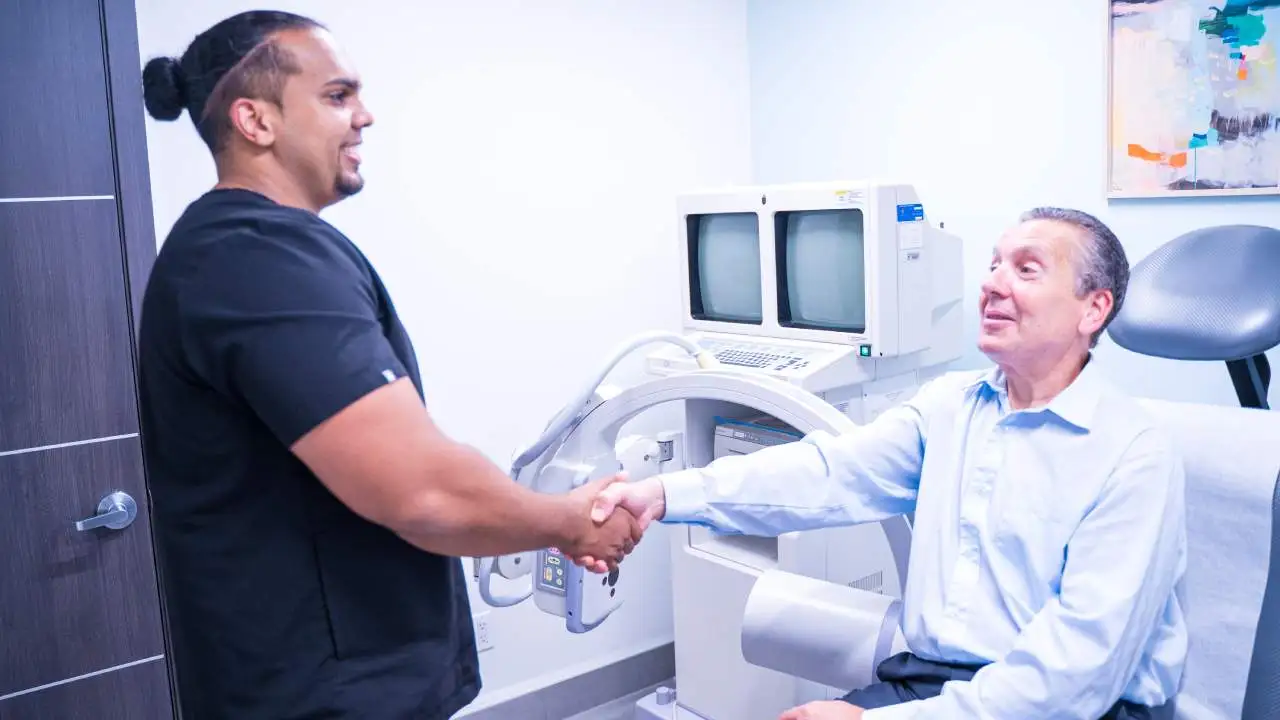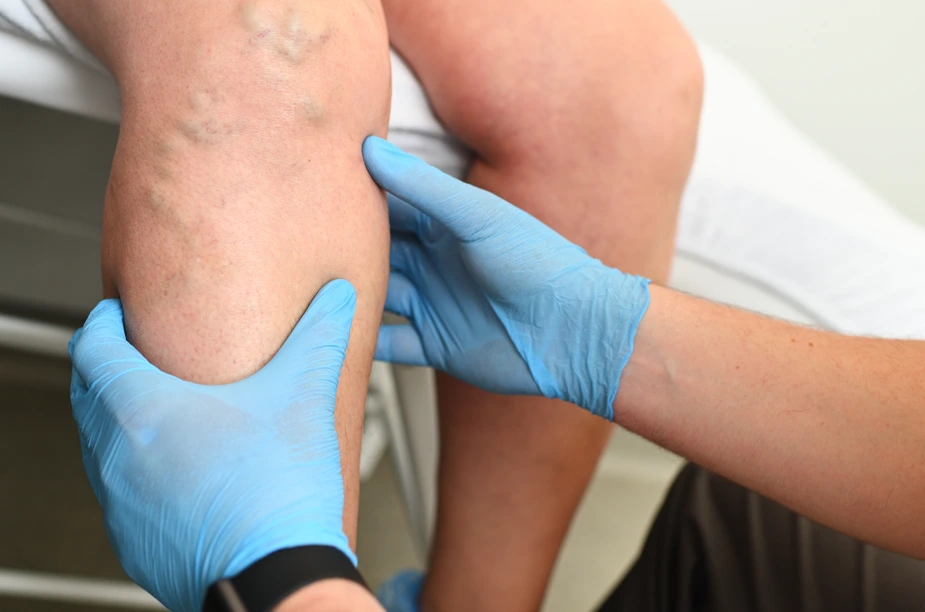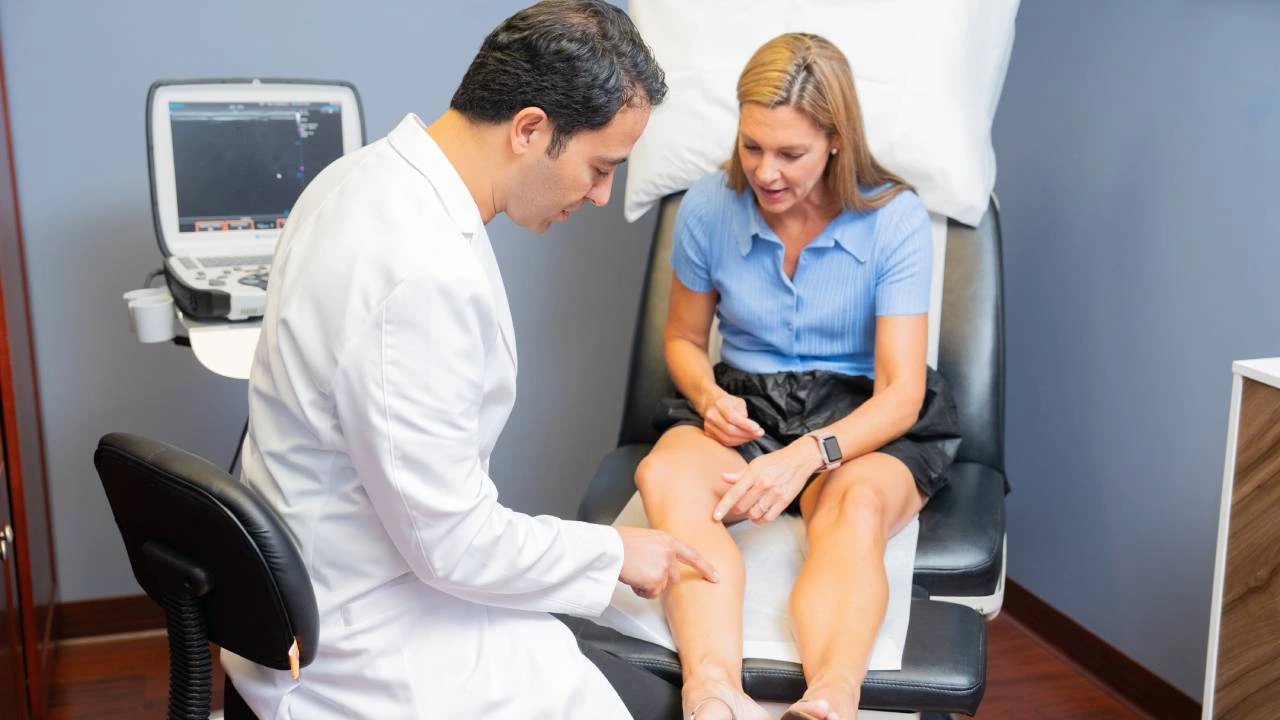Vein Center in LI Describes Vein Treatments Process
Vein Treatment Clinic is the best vein center in LI, specializing in the latest minimally invasive varicose vein treatments. The following is a brief overview of our vein treatments process:
- Step 1: During your initial consultation, our board-certified vein doctor examines your leg veins and administers a vascular imaging test to determine if you have underlying venous insufficiency.
- Step 2: If you have underlying vein disease, we recommend minimally invasive varicose vein treatments, such as radiofrequency ablation, endovenous laser ablation, and VenaSeal.

- Step 3: If you don’t have vein disease — or after the primary minimally invasive procedure — we provide cosmetic vein treatments, such as ambulatory phlebectomy and sclerotherapy, to remove the superficial varicose veins and spider veins.
- Step 4: Our vein doctor will discuss recovery vein care guidelines. The entire vein treatment process concludes within an hour in our vein care clinic, without hospitalization or downtime. You can resume most of your daily activities immediately.
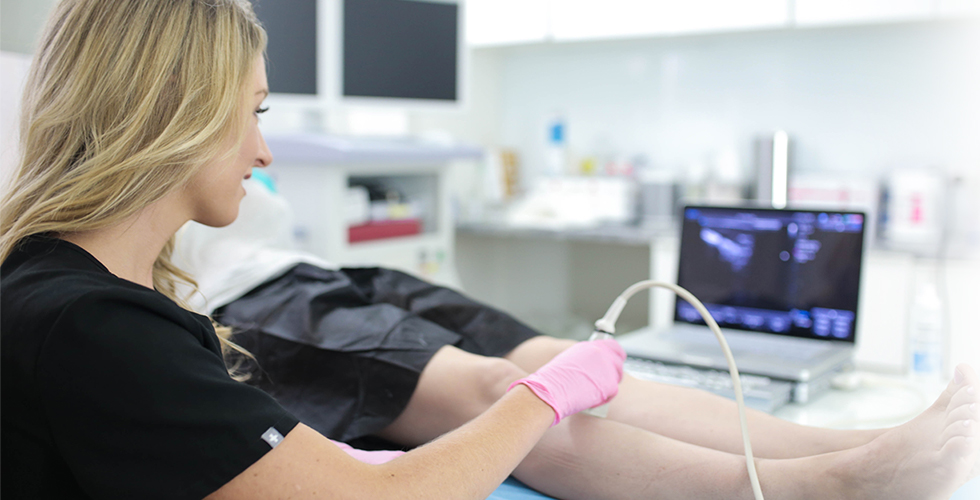
Benefits of Minimally Invasive Procedures over Vascular Surgery
In the past, the only way to treat vein disease was through vascular surgery procedures, such as vein ligation, venous bypass surgery, and vein stripping. However, vascular surgery is no longer considered suitable for vein treatments. The following are the benefits of minimally invasive procedures over vascular surgery:
- Success Rate: Minimally invasive vein treatments have a 97% success rate. Vascular surgeries have a relatively low 85% success rate.
- Comfort: Minimally invasive vein treatments are performed under local anesthesia, and they cause minimal pain and discomfort, both during and after the procedure. Vascular surgery causes considerable pain and discomfort after the procedure.
- Safety: Minimally invasive vein treatments have a negligible risk of side effects. Vascular surgery has a relatively high risk of side effects and complications, such as infections and deep vein thrombosis.
- Hospitalization: Minimally invasive vein treatments are in-office procedures that conclude within an hour in the vein center. Vascular surgeries generally require hospitalization.
- Recovery Period: Minimally invasive vein treatments don’t include any downtime or recovery period — you can resume most of your daily activities immediately after the procedure. Vascular surgery usually leads to significant downtime, and you have to take a few days off work.
- Insurance Coverage: Most insurance plans cover minimally invasive vein treatments because they’re considered medically necessary procedures.
Radiofrequency Ablation
- The vein doctor applies local anesthesia and creates an incision on your skin’s surface.
- The incision is used as an entry point for the catheter. The vein doctor drives the catheter under vascular imaging, guiding it into the diseased saphenous vein.
- Once inside, the vein doctor delivers anesthesia to the vein’s walls.
- The vein doctor activates the catheter, generating thermal energy.
- The thermal energy collapses the diseased saphenous vein.
- The accumulated blood flows to healthier veins, restoring smooth blood circulation to the heart.
- Purpose: Treating vein disease
- Pain & Discomfort: Low
- Duration: Less than an hour
- Insurance Coverage: Yes
Endovenous Laser Ablation
- The vein doctor applies local anesthesia and creates an incision on your skin’s surface.
- The incision is used as an entry point for the endovenous laser, i.e., laser fiber attached to a catheter. The vein doctor drives the laser fiber via vascular imaging, guiding it into the affected saphenous vein.
- Once it’s lodged in the diseased vein, the vein specialist applies tumescent anesthesia, delivering anesthesia to the vein’s walls.
- The vein doctor activates the laser fiber, generating laser energy.
- The laser energy destroys the problematic saphenous vein.
- The accumulated blood flows to healthier veins, restoring smooth blood circulation to the heart.
- Purpose: Treating vein disease
- Pain & Discomfort: Mild post-procedural discomfort
- Duration: Less than an hour
- Insurance Coverage: Yes
VenaSeal
- The vein doctor injects VenaSeal, a medical-grade vein glue, into the diseased saphenous vein.
- VenaSeal fuses the saphenous vein’s walls.
- The accumulated blood flows to healthier veins, restoring smooth blood circulation.
- The diseased saphenous vein hardens and gets absorbed by the body.
- Purpose: Treating vein disease
- Pain & Discomfort: Low
- Duration: Less than an hour
- Insurance Coverage: No
Ambulatory Phlebectomy
- The vein specialist applies local anesthesia and creates several small incisions on the skin’s surface.
- The vein doctor removes superficial varicose veins through the incisions.
- Ambulatory phlebectomy treats varicose veins left after the primary minimally invasive procedure.
- The incisions are sutured and closed.
- Purpose: Removing superficial varicose veins
- Pain & Discomfort: Low
- Duration: Less than an hour
- Insurance Coverage: No
Sclerotherapy
- The vein doctor injects a sclerosant solution into the visible spider veins.
- Sclerosant acts like a vein glue, fusing the spider veins’ walls.
- The spider veins turn into hardened scar tissues.
- Over time, the scar tissues get absorbed by the body.
- The spider veins fade away from the skin’s surface within three weeks.
- Purpose: Removing spider veins
- Pain & Discomfort: Low
- Duration: Less than 30 minutes
- Insurance Coverage: No
Schedule an Appointment with Board-Certified Vein Doctor
Vein Treatment Clinic, LI, is widely considered the best vein care center in Long Island, New York. But don’t take our word for it, feel free to go through our 5-star ratings and reviews from our patients, all of whom are thrilled with the quality of our vein care. Our vein center is helmed by Dr. Caroline Novak, one of the country’s finest board-certified vein doctors with specialized training in vascular imaging and the latest minimally invasive procedures to treat varicose veins. You can find our vein center in West Islip, located on the Montauk Highway right on the border of Suffolk County and Nassau County. For more information, please schedule an appointment with our board-certified vein doctor today.
To learn more about our accredited vein centers, please visit www.veintreatmentclinic.com. Our spider and varicose vein treatment clinics are certified by the IAC as vascular imaging centers and vein treatment centers of excellence. We have local affiliates in New York, Long Island, New Jersey, and California, all of which are held to the highest standards of patient-centered, compassionate, care. We offer the latest technology at every location, and our harvard-trained medical directors lead a collaborative effort to ensure the best outcome for every patient we meet.

